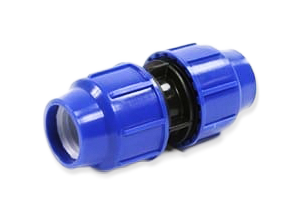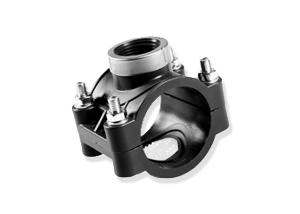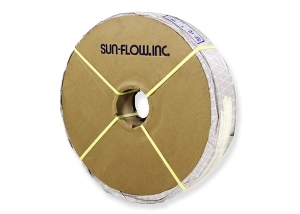Pumpkin drip irrigation
Pumpkins are especially popular in the United States for its tradition during Halloween. Almost 700 million kg of pumpkins are produced annually for this festival alone. In Italy, production is quite high, ranking eighth in the world with more than 500,000 tonnes. Pumpkin production reaches 27.6 million tonnes, half of which are produced in China and India.
Pumpkin characteristics
The pumpkin is a plant native to America and belongs to the Cucurbitaceae family and is called Cucurbita. This vegetable is harvested in autumn but keeps well for several months, making it a winter vegetable. It has an annual cycle.
Roots: The root system of the pumpkin consists of several root bundles that develop superficially in the first 15-40 cm, from the plant.
Stem: It tends to be climbing and has numerous branches that can be up to 6-8m long. These branches are cylindrical and herbaceous.
Leaves: Pumpkin has large, lobed leaves that grow on hollow stems and are covered in fuzz. Pumpkin leaves are also edible in different ways, in soups, salads or even eaten raw, they are green in colour.
Flowers: the flowers are monoecious, i.e. there are both male and female flowers. The male flowers, born straight off the vine, have a thin peduncle while the female flowers have a much shorter peduncle and a central pistil, besides a small fruit swelling at the base near the stem. They are both yellow.
Fruits: are large in size and their shape and colour varies with the cultivar. They can be round, elongated, oval or take on more unusual shapes. The outer part can be ribbed or uniform while they tend to be orange-green in colour. The average weight of a pumpkin can vary from 5 to 20 kg. Inside, the flesh is orange and contains seeds.
Seeds: they have a white outer skin and inside we found the seed, which is widely used not only for planting pumpkins, but also in recipes.
Pumpkin requirements
Climate: The ideal climate for pumpkins is mild as it fears temperatures below 10°C and above 30°C, ideal temperatures are around 20°C.
Soil: It adapts well to various types of soil, although it prefers deep, well-drained soil rich in organic matter. It requires several fertilizations because it needs many nutrients, the first of which is potassium, which allows the fruit to ripen better and, above all, to have a higher sugar content.
Soil preparation: Carry out deep tillage such as digging over or deep ploughing followed by refinement and breaking up the superficial soil.

Pumpkin varieties
The pumpkin is famous not only for its beneficial culinary properties, but also as a tradition for one of the most famous holidays in the world: Halloween. Nothing is wasted from the pumpkin, as also its seeds are widely used as a snack. Pumpkin varieties fall into two categories:
- Cucurbita Maxima (giant pumpkins)
- Cucurbita Moschata (winter squashes)
CUCURBITA MAXIMA
Generally, this variety is globular in shape and flattened at the poles, but we can also find elongated varieties. Colours range from orange to dark green. It is mainly used in cooking for its hard and solid flesh.
- Marina di Chioggia pumpkin: Blistery, bubbled, slate blue-green rind it is often used in culinary recipies;
- Harvest moon pumpkin: Get orange fruits before the end of the summer. Round, smooth, dark orange pumpkins, suitable for different purposes, Avg. 3-5 fruits/plant;
- Orange Hokkaido pumpkin (also called Red Kuri): A teardrop-shaped, thin skin orange colored winter squash used mainly to be eaten;
- Turk’s Turban pumpkin: multi-colored, buttercup-type squash striped with silver, green, and white with an orange-red base. It is used both for eat and décor purposes, 2 or 3 fruits per plant.
CUCURBITA MOSCHATA
The shapes of these varieties are usually elongated, swollen at the ends and the colour varies from orange to green. It is less used in the culinary field because too sweet. Because of its different shapes and colours it is often used as an ornamental fruit.
- Butternut Squash: Beige skin, with deep orange, smooth-textured seetw, nutty-tasting flesh. This is widely used in recipes like soup, breads or pies. 4 or 5 squash per plant are produced;
- Mosque de Provence pumpkin: Ribbed, flat, tan fruits 8-15 lb. Thick, deep orange moderately sweet flesh. 2 fruits per plant;
- Cushaw squash: Cushaws all have the characteristic bottle shape, but they come in a variety of colors and stripe patterns. 2 to 4 fruits per plant.
Download our guide on pumpkin drip irrigation
Drip irrigation increases growth, yield and seed production
Irrigation in pumpkin cultivation is essential because pumpkins have a high-water requirement, especially during the flowering and fruit set period. It is advantageous to design a drip system since it reduces waterlogging, which is feared by pumpkins. In addition, through the use of fertigation, we can easily increase potassic manuring in the growth and ripening phases of the fruit. Drip irrigation also makes possible the use of mulching sheets which not only reduces the weeds in the field, but also avoids direct contact of the fruit with the soil. One study compared drip irrigation with furrow irrigation and found that drip irrigation had a much positive effect on pumpkin yields.
The study was conducted in 1993-1994 by a College in Saudi Arabia, where they compared drip and furrow irrigation on three pumpkin varieties. During the research period, a significant increase in pumpkin growth was observed with drip irrigation. Drip irrigation increases pumpkin yields considerably compared to furrow irrigation, resulting in larger fruits and many more seeds.

Download our guide on pumpkin drip irrigation
The Drip Irrigation products
- RioFlex – Polyethylene layflat hosePamela Pascucci2023-03-07T08:55:40+01:00
RioFlex – Polyethylene layflat hose
- Blueseal16 – made in Italy best compression fittingsmcgroup2023-05-09T16:44:53+02:00
Blueseal16 – made in Italy best compression fittings


























